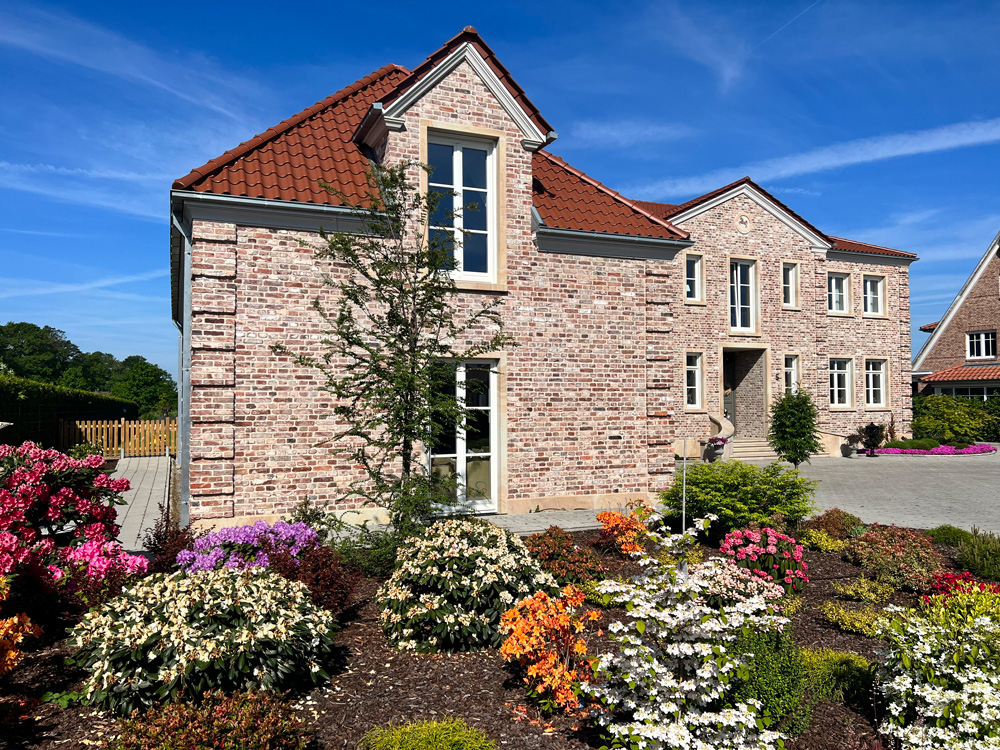The Reclamation Process – Step by Step

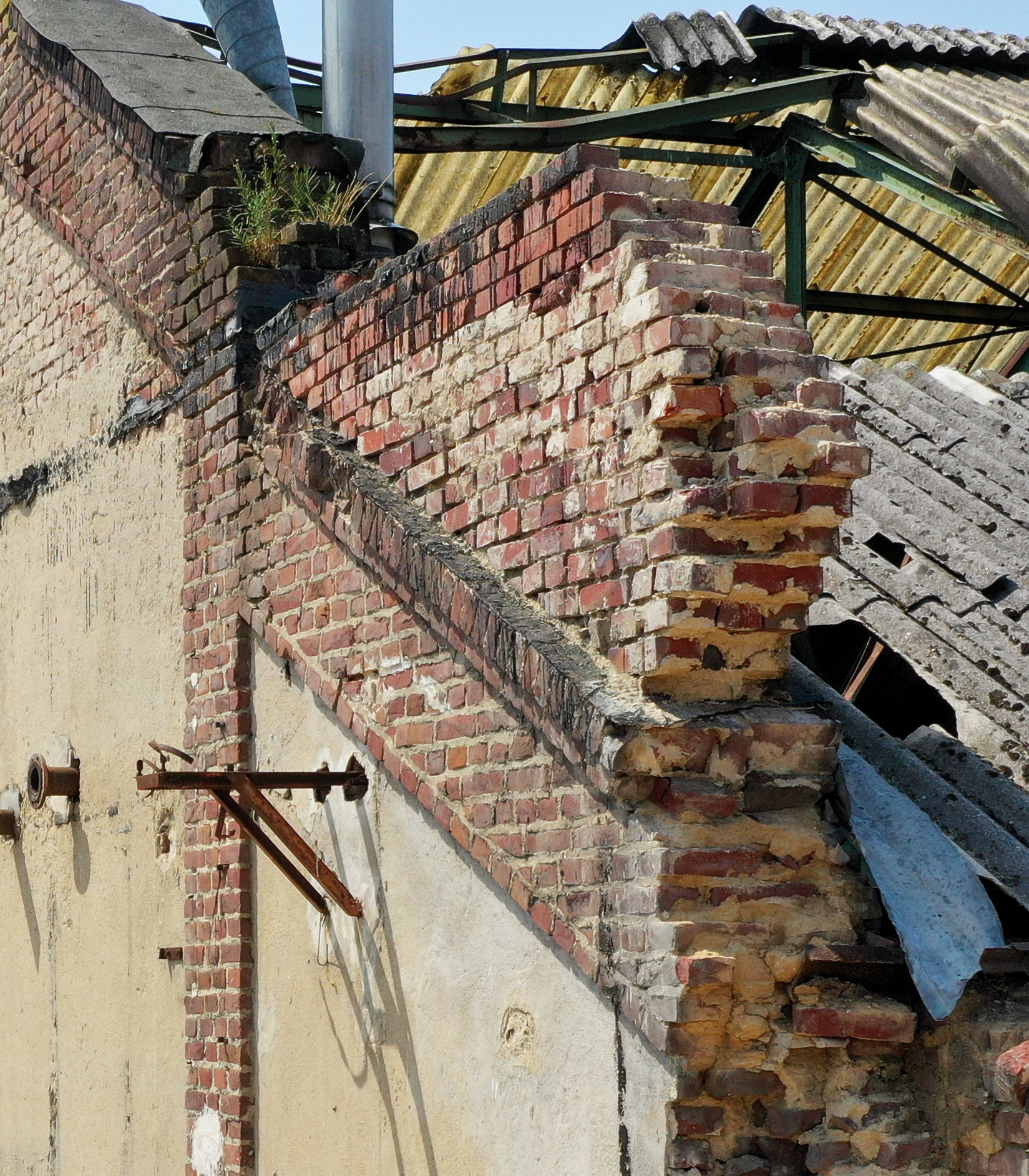

Demolition
Our bricks begin their second life during the demolition of old buildings. Many come from historic factories or residential structures, where they’ve served for decades — sometimes over a century.

Recovery
Often found as facing bricks in old industrial buildings or hidden within the walls of heritage homes, the bricks are carefully salvaged by our partners. They are stored separately and kept free from other construction debris to ensure purity.
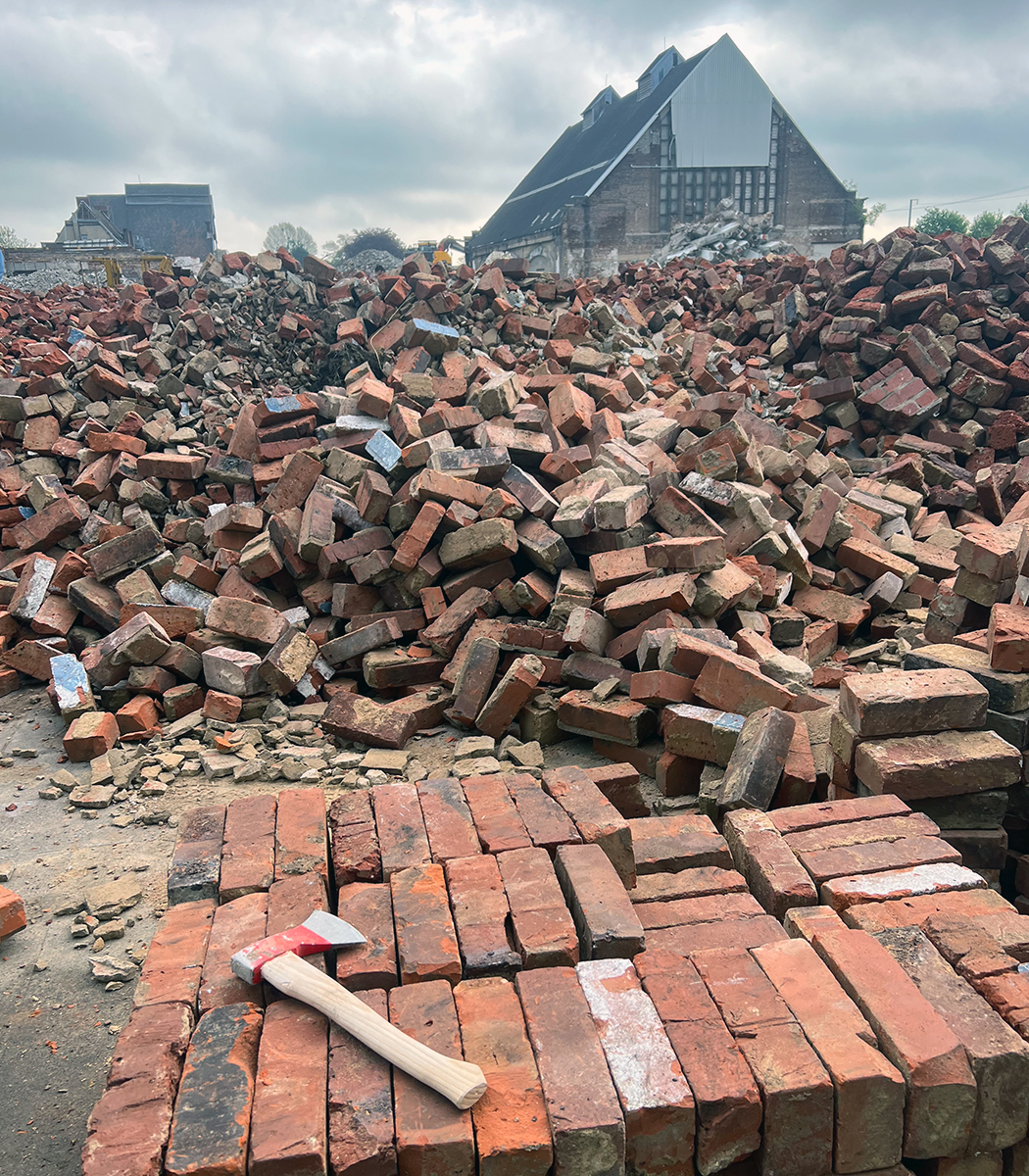
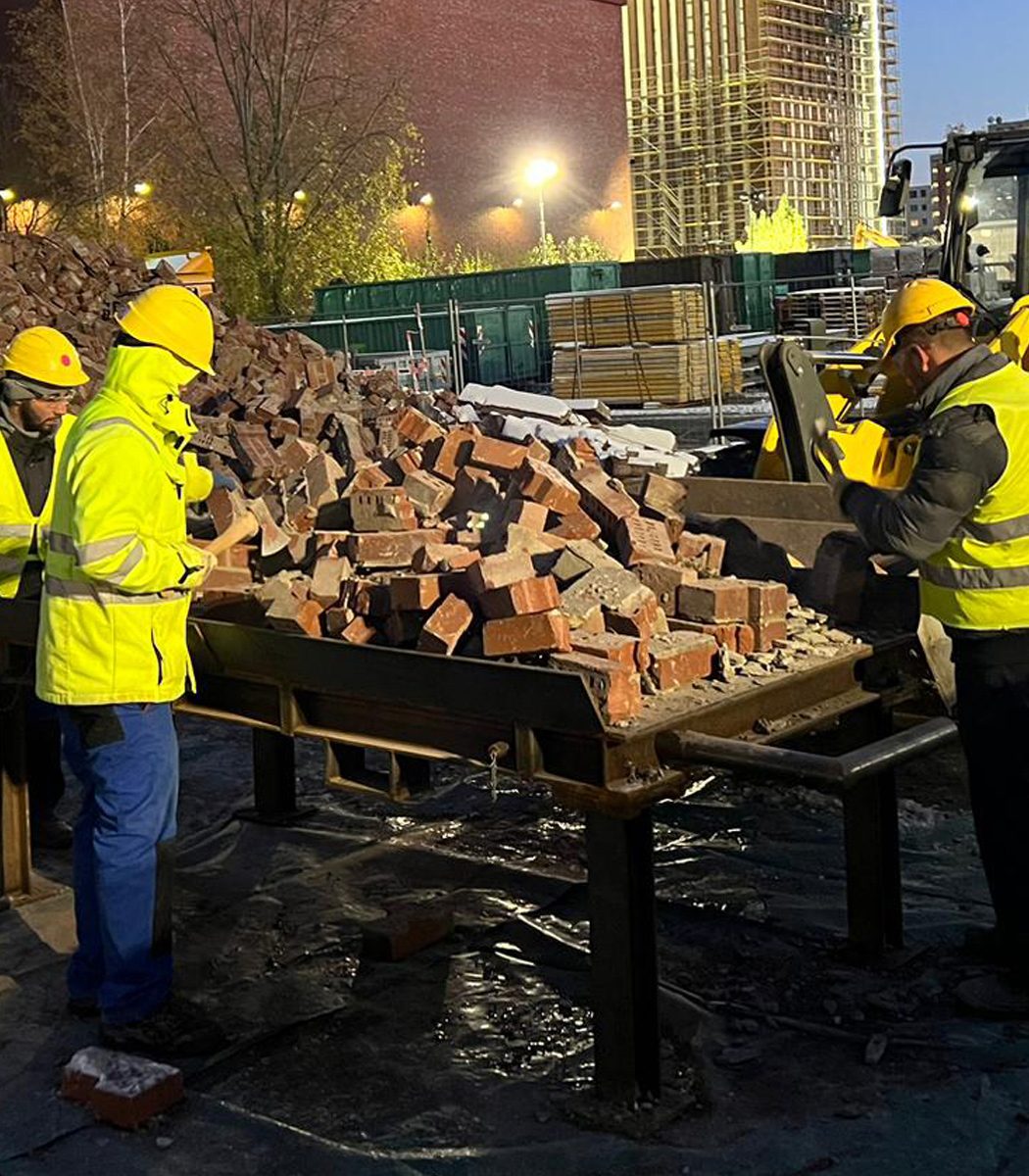

Exposure & Cleaning
Each brick is then meticulously freed by hand. In a labor-intensive process, we remove every piece of mortar and plaster using traditional hand tools like hammers and chisels — preserving the original surface and character.

Result: A Sustainable Product
The result is a unique building material that reflects our philosophy: responsible use of resources. By reusing these bricks, we achieve a CO₂ saving of over 98 % compared to newly manufactured clinkers — a powerful contribution to circular construction.
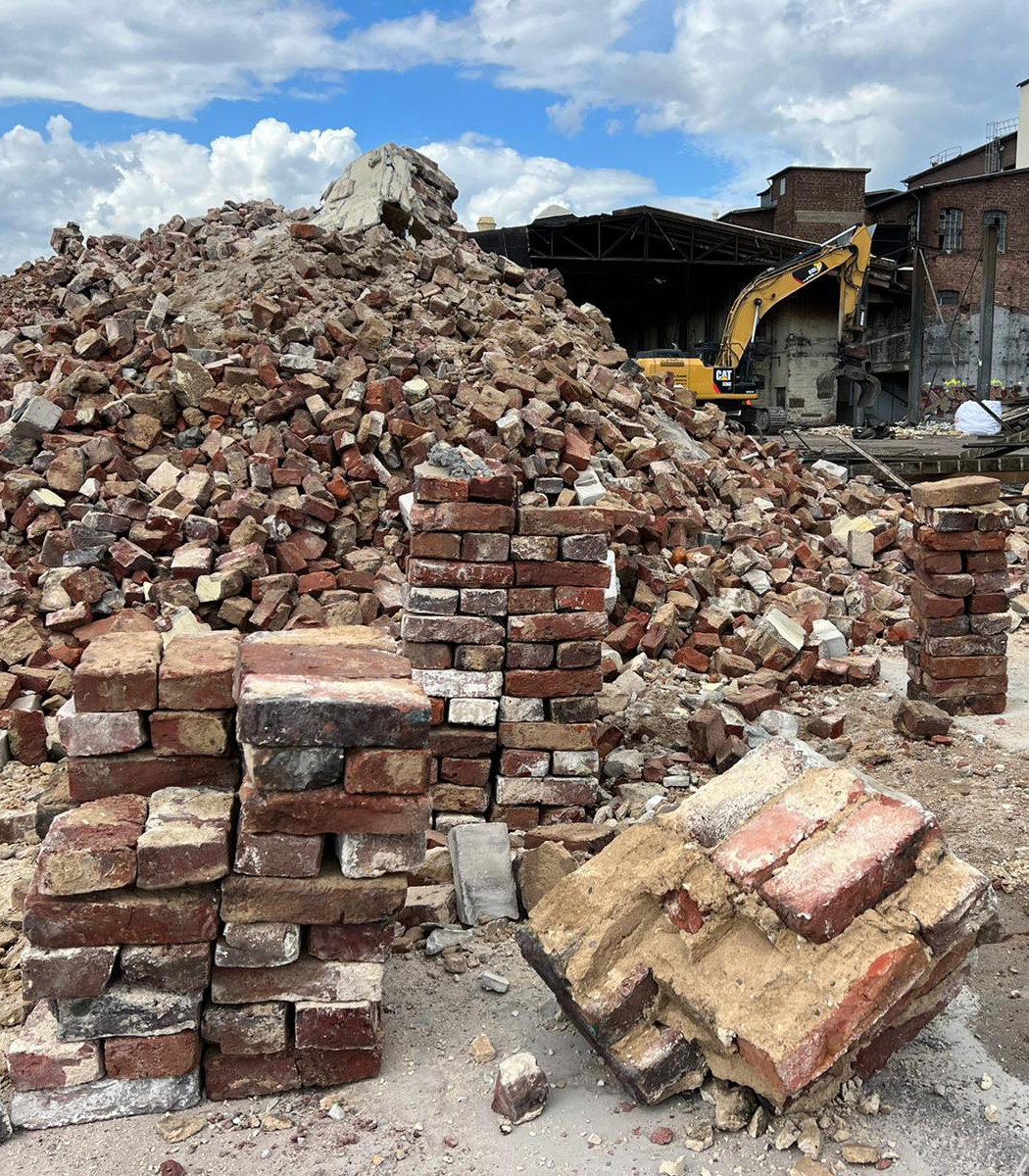
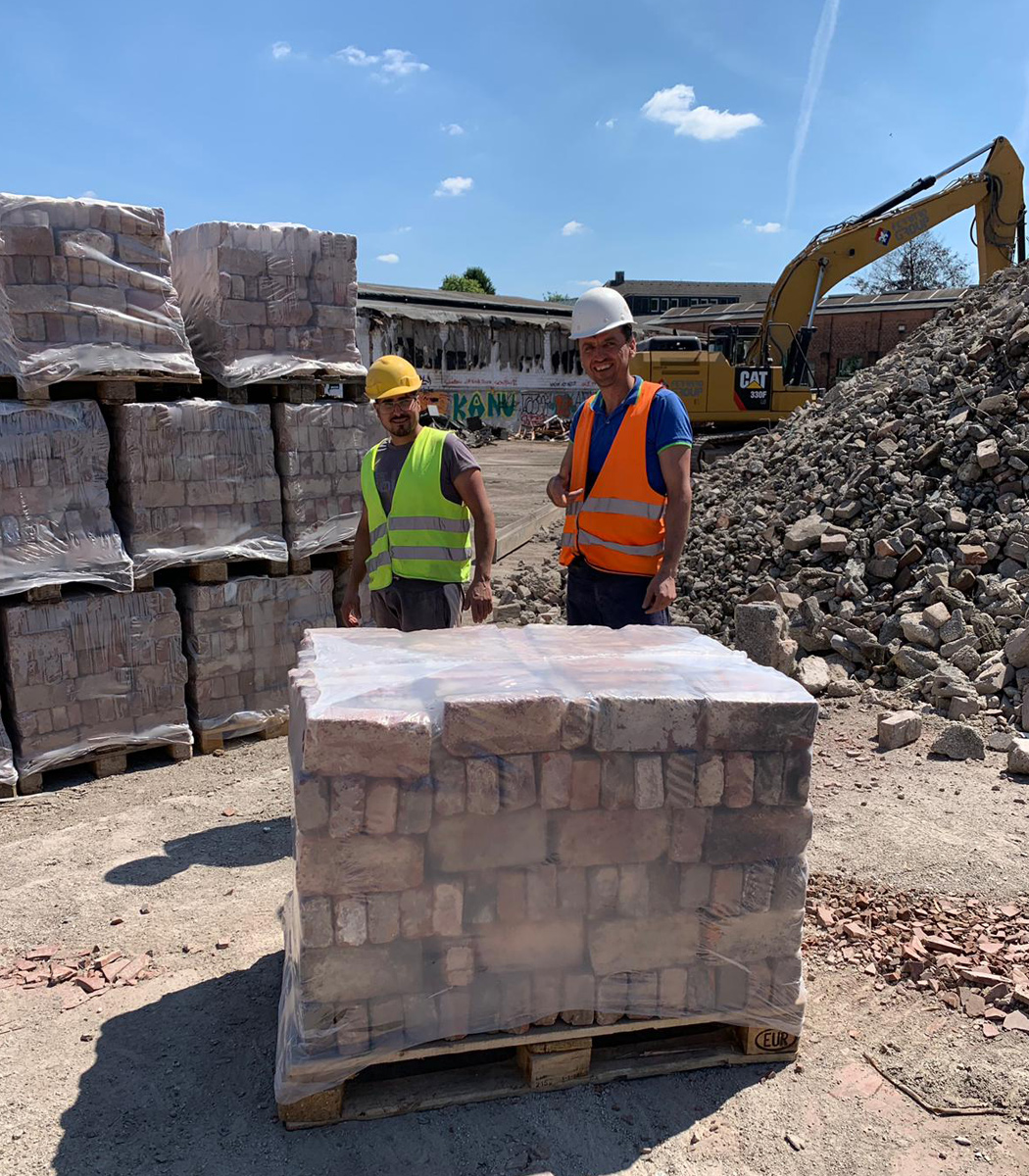

Palletizing | Wrapping | Storage
The cleaned bricks are neatly stacked on Euro-pallets, wrapped for protection, and temporarily stored in our climate-controlled warehouse — ready for the next step.

Cutting | Sorting
For products like clinker slips and paving slabs, the bricks are carefully cut by hand at a separate site. Each piece is sorted by color, texture, and quality, then repalletized for delivery.
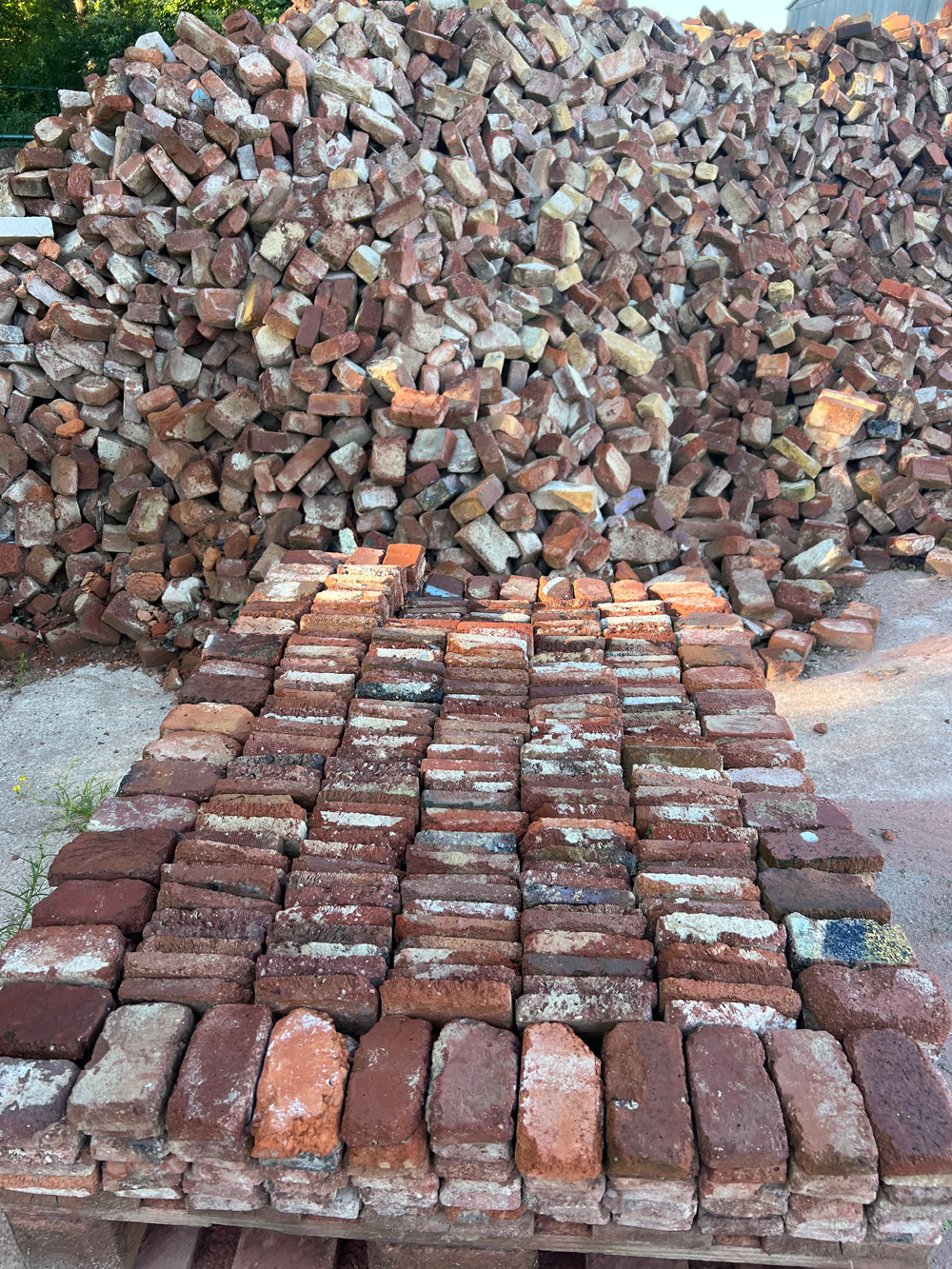
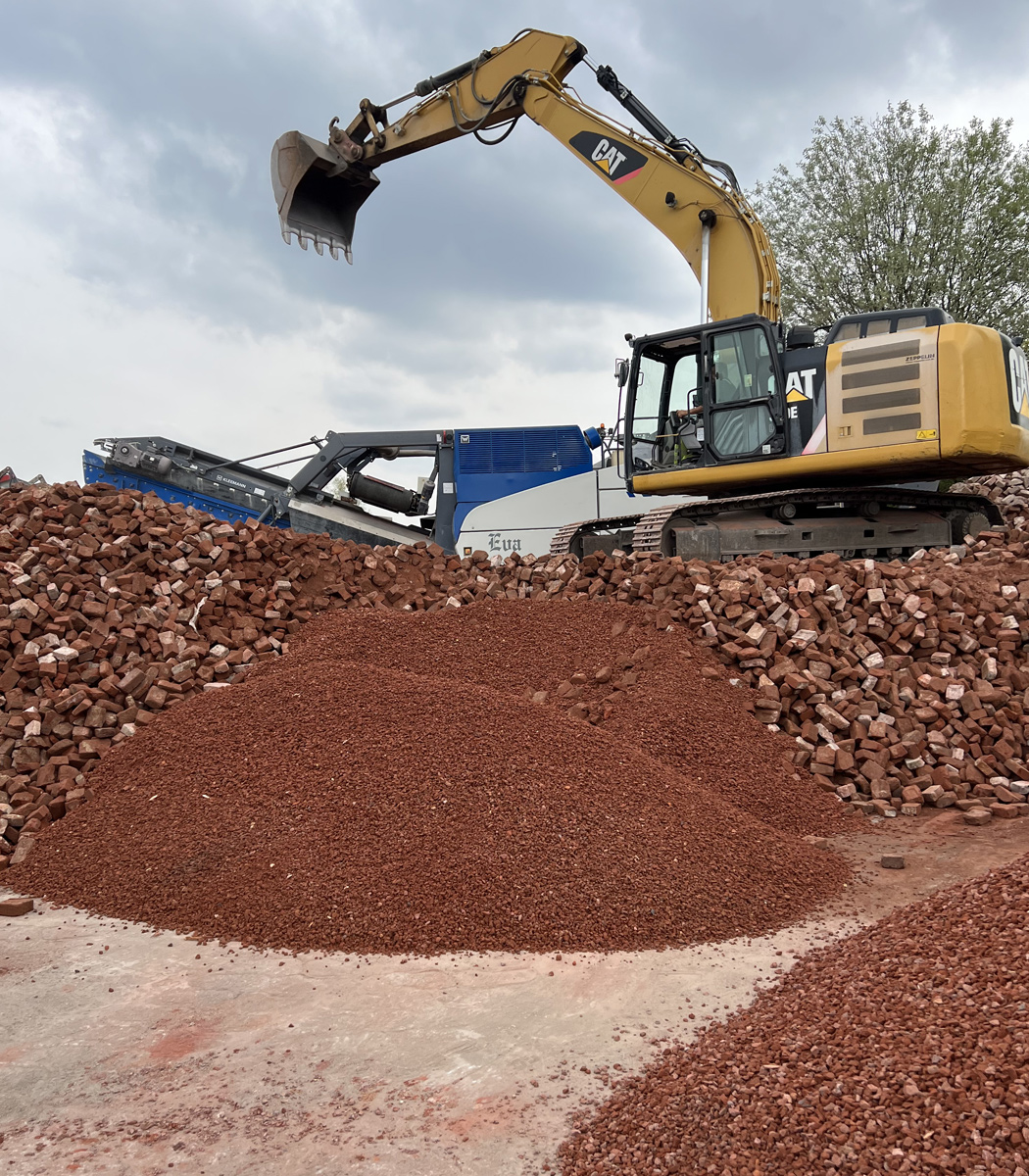

Substrates
Even the leftover fragments are given new purpose. Crushed clinker is processed into high-quality vegetation substrate (0–5 mm / 5–12 mm) — used on green roofs and in landscaping to support plant growth and urban biodiversity.

Final Use – A New Chapter Begins
Our finished, one-of-a-kind materials find their new home — whether as solid bricks, slips, or paving elements — inside or outside modern buildings. With every installation, they continue to tell their story, inspiring future generations with their history, beauty, and sustainable legacy.
